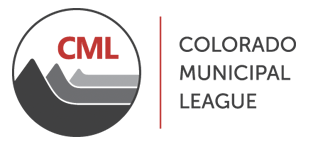Addressing Contemporary Challenges and Opportunities through Comprehensive Planning
In This Section
Colorado Municipalities
April 2019
By Waverly Klaw, AICP, Colorado Department of Local Affairs

How current is your comprehensive plan? Does it take recent demographic data and future trends into account? How well does it address some of today’s “big hairy problems” and offer strategies toward solving these problems? This article examines six current policy and land use challenges and offers recommendations for how they can be addressed within a municipal comprehensive plan.
Renewable Energy and Vehicle Electrification
On Jan. 17, 2019, Gov. Jared Polis issued an executive order setting the goal of reaching 100 percent renewable electricity in Colorado by 2040 and accelerating the transition to zero-emission vehicles.
Cities and towns consume approximately 70 percent of global energy and therefore are critical players in reaching the statewide renewable energy goals. Municipalities should consider exploring goals and strategies for promoting renewable energy, energy efficiency, vehicle electrification, public transit, and transit-oriented development within their comprehensive plans.
Buildings are major consumers of energy, accounting for about 39 percent of total U.S. energy consumption. Municipalities should engage in thoughtful conversations about how existing or new buildings can be made more energy efficient and could examine whether land use regulations present barriers to emissions-reducing strategies such as installing solar panels.
Resilience to Natural Hazards and Other Stressors
In the past 10 years, Colorado communities have been severely affected by floods, wildfires, drought, and other hazards. Between 2012 and 2013 alone, Colorado experienced wildfires and floods that destroyed a total of 2,944 homes, caused an estimated $556 million in economic impact, and inundated an estimated 67,000 acres of farmland and grazing pastures. As temperatures are projected to rise between 2.5 and 5 degrees Fahrenheit by 2050, Colorado will face increased potential for more frequent and severe wildfires, drought, extreme heat, and floods.
Cities and towns should assess their vulnerability to natural hazards and other stressors and should incorporate mitigation strategies into their comprehensive plans that will enable them to be more resilient in the future. The assessment of hazards is required by statute, and integration of hazard mitigation principles is required for comprehensive plans funded by the Colorado Department of Local Affairs (DOLA) Energy/Mineral Impact Assistance Fund grants. DOLA’s Planning for Hazards: Land Use Solutions for Colorado guide gives specific guidance for integrating natural hazards into comprehensive plans, and its Colorado Resiliency Office offers assistance to communities wishing to increase their resilience to shocks and stressors.
Water
Increased population growth, a warming climate, and decreased precipitation mean that Colorado’s communities are experiencing a water squeeze. The 2018 Colorado Climate Plan predicts that, because of these factors, “an additional million acre-feet annually may be needed by mid-century to meet demands.”
Unfortunately, mid-century is only about 30 years away. For this reason, cities and towns will want to work with their water providers to determine their water-demand trajectories based on population growth, climate change, and other factors. Municipalities also should consider in their comprehensive plans those development patterns that conserve water. Pursuant to Senate Bill 8 passed in 2015, the state and its partners have resources available to support better integration of water demand management and conservation planning into land use planning.
Attainable Housing
Colorado’s population is projected to exceed 6.4 million by 2025. How can a municipality’s long-range plan help ameliorate the housing challenge that cost-burdened residents are facing? When updating a plan, it is important to establish proactive policies that encourage or incentivize attainable housing, as well as to identify and resolve barriers to creating or maintaining such housing stock.
DOLA’s Affordable Housing Guide for Local Officials that describes a set of land use planning practices that, when applied in balance with other community priorities, can encourage and sustain housing that is attainable for its residents.
An Aging Demographic
Colorado’s population over the age of 65 is projected to grow by 43 percent between 2019 and 2030. Lifelong Colorado, an initiative launched by Gov. John Hickenlooper in September 2018, encourages cities and towns across Colorado to develop age-friendly plans by focusing on the environmental, economic, and social factors that influence the health and well-being of older adults.
For example, when assessing transportation in planning, consider that 30 percent of Coloradans aged 65 and older were unable to get somewhere within the past month due to a lack of transportation. How will your community plan help to ensure that transportation is made easier for all and that older Coloradans can age in place? The recently updated 2018 Strategic Action Plan on Aging offers guidance on steps that the state and local governments can take to plan for the opportunities and challenges related to aging.
Infrastructure Improvements and Municipal Services
Finally, cities and towns told CML through its State of Our Cities & Towns survey that the most common major challenge from 2008 to 2018 was unfunded street maintenance and improvement needs. Communities are struggling to keep up with demand and are considering more resilient and lasting approaches to solving these issues.
Cities and towns facing these challenges can develop strategies to address them in the transportation or infrastructure sections of their comprehensive plans, as well as in their capital improvement plans, like the City of Longmont has done.
Good Planning Principles
As a reminder, here are a few pointers to keep in mind when updating a comprehensive plan.
A good comprehensive plan:
• includes vision statements, guiding principles, goals, objectives, and policies;
• describes an implementation strategy composed of action plans, metrics, and outcomes to drive community vitality and future sustainability;
• analyzes existing conditions and trends regionally and in the community;
• is developed in consultation with service providers and neighboring jurisdictions;
• reflects the desires of the community through robust public engagement;
• is actively managed and adopted by the planning commission;
• includes a three-mile plan per Colorado Revised Statute § 31-12-105(1)(e)(I);
• uses graphics, visuals, and a thoughtful layout to increase readability;
• incorporates sustainability, equity, and resilience throughout;
• includes all elements relevant to the community, including land use (with future land use map), transportation, utilities/facilities/infrastructure, housing, culture/history, education, energy, environment/natural resources, water (supply, demand, and quality), parks and open space, economic development, public health, hazard mitigation, and recreation and tourism (required by statute); and
• conforms to the regulations put forth in C.R.S. § 31-23-206.
The American Planning Association’s Sustaining Places: Best Practices for Comprehensive Plans by David R. Godschalk and David C. Rouse remains a helpful resource for developing a strong and multifaceted comprehensive plan. DOLA’s Community Development Office, Resiliency Office, and Demography Office are also available to provide assistance.
